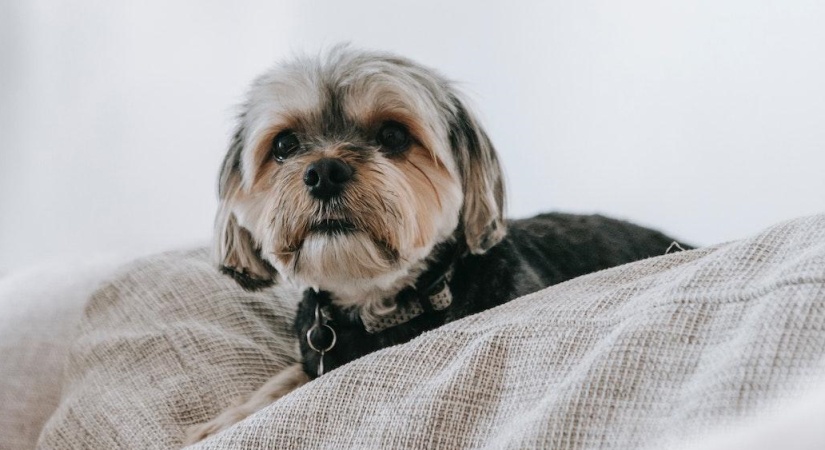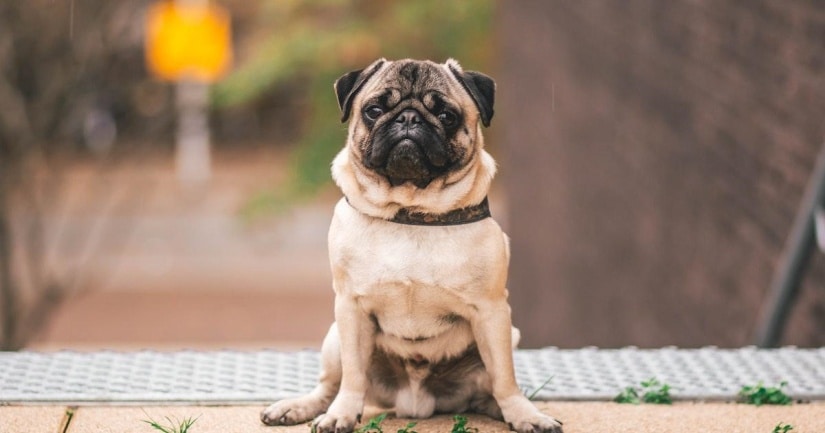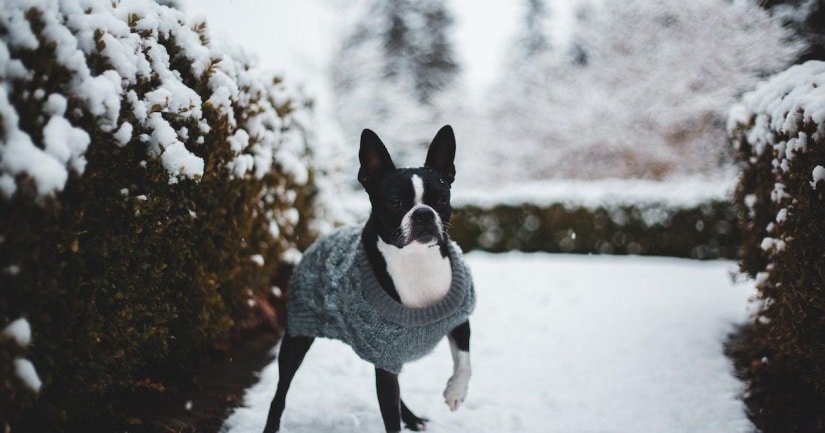Small dogs have unique maintenance but they are easy to keep. All you’ve to do is understand their body’s needs and sync your lifestyle accordingly.
It may sound like a huge thing to do. But trust us, the care and lifestyle changes that small dogs demand is petty for you but life-changing for them.
In this guide, you will learn about:
- → The average lifespan of small dogs
- → Popular Small Dog Breeds
- → Common Health Problems in Small Dogs
- → How to help your little pup live longer?
Let’s get started!
Average Lifespan of Small Dogs
On average, small dogs live up to 10-15 years. They can also live up to 18 years or more if maintained well.
Science says small dogs live longer than big dogs. That’s because the frequency and intensity of physiological processes in a big dog are much greater compared to a small dog. Therefore, their strength and health weaken quickly. On average, large dogs live up to 5-8 years.
Now, like everything else, there are exceptions in dogs’ aging as well. Small dogs can have a shorter lifespan if they’re not maintained well. And big dogs can live up to 29 years if they are maintained well. Bluey, the Australian Cattle Dog did. Read Bluey’s complete story here.
Below, you’ll read about some of the most popular small dog breeds with their respective life spans and common health problems.
Popular Small Dog Breeds
Visually, small dogs appear to be small fluff balls. These dogs grow up to have a maximum height of about 10 inches. They also have narrow shoulders. And most small dogs have a stocky structure.
In terms of weight, small dogs weigh about 22-25 lbs. Usually, the weight lies below this borderline. The weight is well distributed, and they have an overall small physique.
Let’s check out some of the most popular ones in greater detail:
Shih Tzu

Origin
Shih Tzu’s originated in China back in the 17th century. The dog was originally a cross between Tibetan Spaniel and Lhasa Apso. But today several crosses of this breed have surfaced. Some of these are:
- Aussie Tzu
- French Bull Tzu
- Weshi
- Shih Mo
- Silky Tzu
You can explore about 40+ more Shih Tzu Mixes here. Despite the extensive list of crossbreeds, it is still one of the new small dog breeds in the USA. There were only about 100 Shih Tzus in the 1960s. Today, there are millions of them. On average, Shih Tzus live up to 13-15 years. The longest-living Shih Tzu was Smokey. It lived up to 28 years.
Physical Characteristics
Generally, Shih Tzus are known for their long, flowing coats. Owing to their long coats, Shih Tzus often require extensive grooming. Usually, their coats are double-colored and layered, such as brown and white, fawn and white, red and white, etc. Solid-colored Shih Tzus are rare. The rarest coat color of a Shih Tzu is black.
These dogs grow,grow to have a total height of about 8 to 12 inches. They weigh around 16 pounds. Their muzzle is short, and their eyes are quite prominent. Since their eyes are prominent and protruding, Shih Tzus may develop eye problems as they age.
Personality and Temperament
Shih Tzus are sweet, playful dogs that require ample amounts of attention and socialization. If they don’t receive the attention they require, they can be irritable and snappy. These small dogs are also intelligent and curious. And so, they require some activity to keep them busy.
As an indoor dog, Shih Tzu does not do well in heat and tends to bark excessively. Also, they are fragile and prone to injuries. You will have to paw-roof your house before bringing in a Shih Tzu.
Common Health Problems
- Liver Problems
- Dental Problems
- Prone to Bacterial & Viral Infections (Like Parvo & Rabies)
- Obesity
Pug

Origin
Pugs originated back in 400 BC in China. These short wrinkly dogs kept the Monks company. Over time, several pug mixes have surfaced. You can explore them here.
Physical Characteristics
Pugs usually have a prominent black muzzle, short ears, short hair, and a muscular build. They come in the following colors:
- Fawn
- Apricot
- Silver
- Black
Pugs are so small that they land in both toy breeds and small dog breeds. They grow up to a maximum height of about 8 – 13 inches. But their shoulders are narrow and the structure is super stocky, which makes them appear smaller. They weigh about 14-18 pounds.
Personality and Temperament
Pugs are affectionate and friendly. These are fairly curious but very obedient. Unlike Shih Tzus, Pugs are easier to train. They also get along well with children and can be very protective of their owners.
Common Health Problems
- Overheating
- Respiratory distress
- Ear infections
- Eye injuries
Boston Terriers

Origin
The credits for the origination of Boston Terrior go to Robert C. Hooper and his friend Edward Brunett.
In the 19th century, Robert purchased a white English terrier named Judge and brought him home. Later, Judge was bred to Edward’s female white bulldog named Gyp. The result of these two dogs is now known as the Boston Terrier.
It’s one of the few dog species that has originated from the United States. American Kennel Club recognized it in 1893.
Physical Characteristics
Boston Terriers are typically compact dogs. They have a square-like heads with arched necks and erect ears. Their muzzle is also short but smooth.
Unlike other small breeds, the Boston Terrier’s nose has no wrinkles. Its chest is very broad, while the tail is almost non-existent. So, the overall proportion of the body is well-balanced.
These dogs are up to 17-inches tall and weigh around 20-pounds. Even the bulkiest Boston Terrier will weigh 25-pounds.
All Boston Terriers have stylish dark-colored coats except for the Blue Boston Terrier. This particular type has a blue, grey, or silver coat because of chromosomal mutation.
Personality and Temperament
Boston Terriers are very affectionate dogs who enjoy the outdoors and indoors equally. If you take them in the wild, the dogs will display bursts of energy and explore nature enthusiastically. However, even in homes, they stay perfectly happy as long as their exercise needs are met.
Common Health Problems
- Epilepsy
- Hearing Loss
- Allergies
- Cataracts
- Luxating Patella
Other Popular Small Dog Breeds
Shih Tzus, Boston Terriers, and Pugs are only three of the most popular dog breeds. Others are:
- Maltese
- Pomeranian
- Chihuahua
- Griffon
- Yorkshire Terrier
- Poodle
- Bichon Frise
- Dachshund
- Brussels
Each of these breeds has crossbreeds and mixes of their own. So, the list goes on. You can explore more types of dogs here.
Common Health Problems in Small Dog Breeds
Now that you’ve explored the most popular small dog breeds with their respective potential health problems, let’s check out some general ones:
Valvular Disease
Also known as Mitral Valve disease, valvular disease is the most common disease that small dogs are likely to develop. It’s a genetic disease, and there are no direct causes of mitral valve disease in small dogs.
In this disease, the mitral valve that’s located between two of the chambers of the heart weakens. Consequently, the blood may flow back, and deoxygenated blood may mix with oxygenated blood. And disrupt the circulatory system.
Owing to this, the dog may experience heart strain. If it continues to intensify, the dog may experience heart failure and die. For that very reason, we recommend frequent visits to the vets for small dogs.
The symptoms of the valvular disease are as follows:
- Weight loss
- Becoming weak & tired
- Hypertension
- Fainting with excitement
- Unable to exercise
Overheating or Shivering
Unlike large dogs, small dogs can easily heat up or lose heat. You may notice your dog panting excessively or shivering.
Whichever way it is, it’s a good idea to invest in a dog jacket to keep your dog warm. If you live in a warm region, keep your dog indoors and take him out on walks when the sun’s relatively cool.
Patellar Luxation
Limping is a prominent symptom of patellar luxation. If your small dog got involved in a fight or a physically distressing activity, it may develop this health condition. The knee cap is damaged, which keeps your dog from living a healthy life. At times, it’s genetic as well.
Recommend Health Care Routine
Ideally, you should take your small dog to the vet once every six months when it’s young. As it begins to age, you should take it to the vet at least once every three months.
With that said, here’s a recommended healthcare routine for the three different stages of a small dog’s life:
Puppy
As soon as you bring in the puppy, pay a visit to the vet. Depending on whether you adopted the small dog from the wild or a proper animal shelter, you’ll know if the dog is vaccinated or not.
If it’s vaccinated initially, that’s great. You’ll have to continue the routine and get the dog regularly vaccinated until the age of 16 weeks.
Before the dog reaches six months of age, we recommend getting it neutered as well. You ought to take special care in the case of females. If you get the female neutered after the first heat cycle, the chances of mammary cancer and uterine infection increase.
Adult
When your small dog is older than 12 months, it enters into its adulthood. This is the prime time for your dog and it lasts up to eight years.
During these years, your dog’s physical performance is directly proportional to how you care for it. For example, a good diet will result in energetic outdoor walks. This is also the time when your small dog contracts diseases and begins developing them.
For that very reason, you should take your adult dog to the vet at least once every six months. Get your dog checked for:
- Dental Problems
- Fleas & Parasites
- Joint and bone problems
- Mental health
If your small dog is not receiving enough mental stimulants at home or is living under stress, you will notice your dog is sleeping longer than usual. It may not be as active as it used to be as a pup. Oftentimes, the symptoms of bad mental health are not very evident in adult small dogs.
As a result, mental stress and diseases are not timely diagnosed. This, in turn, can prove to be harmful to its physical health as well.
For that very reason, we recommend consulting your vet and regularly providing your pet with de-stressors and relievers, such as CBD chews and CBD oil.
Some people also prefer giving catnip to their dogs. It effectively addresses digestive problems. But catnip can be sedative for dogs.
CBD oil and its products are relatively safer. Topically applied or ingested CBD oil can ease inflammatory problems, relieve chronic pain, anxiety, and seizures. With that said, it’s difficult to find reliable CBD products for dogs.
So, you should consult your vet before choosing a brand and giving it to your dog. If your vet has little or no experience on the subject, you can go with cbdoilireland.ie, which is a brand trusted globally.
Apart from that, you should also begin adding dietary supplements to your dog’s diet. It’s a good idea to add the following supplements to your adult small dog’s diet:
- Fish Oil
- Probiotics
- Glucosamine
- Antioxidants
At this stage, you can add supplements to your dog’s diet in the form of chews.
Senior
Above eight years, your small dog enters its senior years. If you take care well, it can remain just as active. But if you don’t, the dog will begin to slow down.
We recommend taking your dog to the vet once every six months. Pay extra attention to dental care and arthritis problems.
As for supplements and CBD, it’s a good idea to go for liquids instead of solids. Your dog might not be willing to put through the struggle of chewing, so make it easier for them. You may have to opt for injections in case of supplements.
Recommended Lifestyle Routine
Now that you know how to medically care for your small dog, let’s have a look at the things you ought to take care of at home:
Puppy
Arrange a small, comfortable, and dedicated space for your dogs to sleep. Customize this small space with a custom bed, some dog pictures, wallpapers, toys, their food bowls, and a pot to instill a sense of ownership and attachment. As a puppy, your small dog should sleep for at least 16-18 hours.
Small dogs are little packs of energy and tend to play more than large dog puppies. Make sure you arrange enough interactive toys or other dogs that your dog can play with.
As puppies, small dogs also require a lot of your attention. Make sure you spend enough time with them to train them, cuddle them, and play games with them. It is also the fragile age where they develop their relationship with other creatures.
If you want your small dogs to be friendlier towards humans, ensure that your dog interacts with a variety of human beings now and then. Similarly, if you plan to get cats or birds in the future or want your dog to be tolerant towards these creatures, it’s a good idea to train to befriend smaller creatures at this age.
Adult
As an adult, there’s not much that you need to change in your small dog’s life. Just increase the time for physical activity in its routine. Take your dog out for longer outdoor walks.
If you haven’t arranged a companion for the dog at home or spend much time with it, ensure that you take your dog to a park where it can interact with other dogs. Otherwise, your dog may get depressed.
Also, you might want to change the bed of your small dog. Bring in a super soft dog bed. As your dog begins to age, it’ll develop joint and bone problems, such as patellar luxation and soft beds can help a lot. Adult small dogs sleep for 14-16 hours every day.
Senior
Senior small dogs require the same care as a little pup. These dogs sleep longer than adult dogs. They may get back to sleep for 16-18 hours.
But during the short span of their waking hours, you’ve to take them on outdoor walks and ensure that these small furballs exercise their joints enough. During this age, it’s recommendable to shift their sleeping area nearer to you. So, you can keep an eye on your pup at all times.
Also, senior dogs are likely to develop dental problems, which may lead to fatal health problems. If you notice your dog eating less, not at all, or drooling excessively, we urge you to take your little fur pal to the vet immediately.
FAQs
Q. What is the healthiest small dog breed?
The healthiest small dog breeds are Lakeland Terrier, Manchester Terrier, Shiba Inu, Welsh Terrier, and Norfolk Terrier.
Q. What vaccinations are a must for small dogs?
All dogs should receive core vaccines, including distemper, canine parvovirus, canine hepatitis, and rabies. Non-core vaccines are:
- Canine influenza virus H3N8
- Canine influenza virus H3N2 distemper-measles combination vaccine
- Bordetella bronchiseptica
- Borrelia burgdorferi
You should get your dog vaccinated for noncore vaccines depending on your dog’s risk of contracting these diseases.
Q. What’s a good diet for small dogs?
The perfect diet for your small dog is specific to its breed and bodily needs. But generally, all small dogs require small amounts of food frequently. You should give them protein-rich meals at least thrice a day. Make up for vitamins and minerals with two more mini meals.
By the rule of thumb, small dogs should be given 1-1.25 cups per meal. Senior dogs should be fed less as they may have trouble digesting.
Final Thoughts
Summing up, small dogs do not require any extensive care compared to large dogs. They require more or less the same intensity of care.
The only difference lies in the specification of the care they require. We’ve shared all the necessary details with you in the guide above. We hope it helps you take the best care of your small dog!
